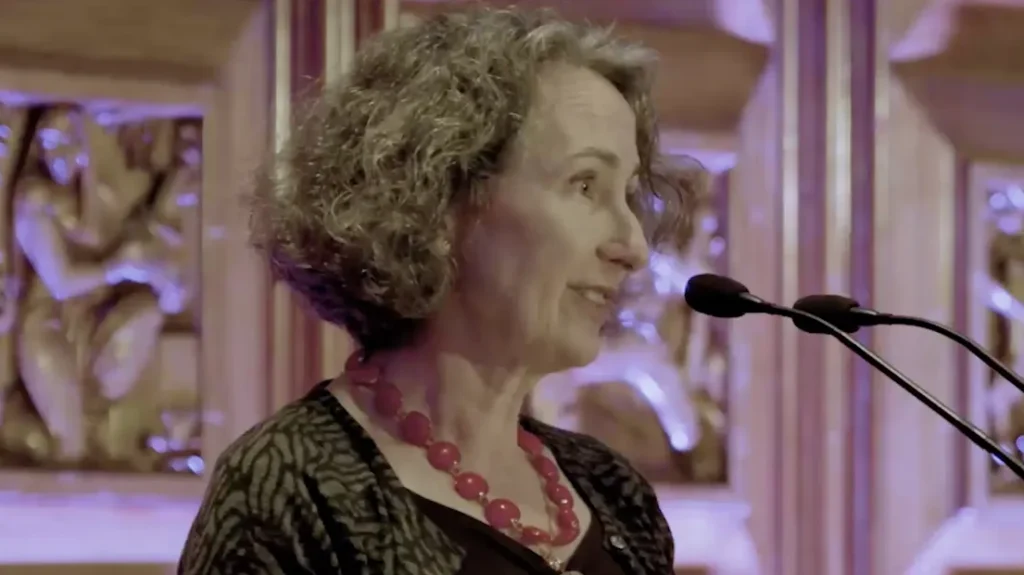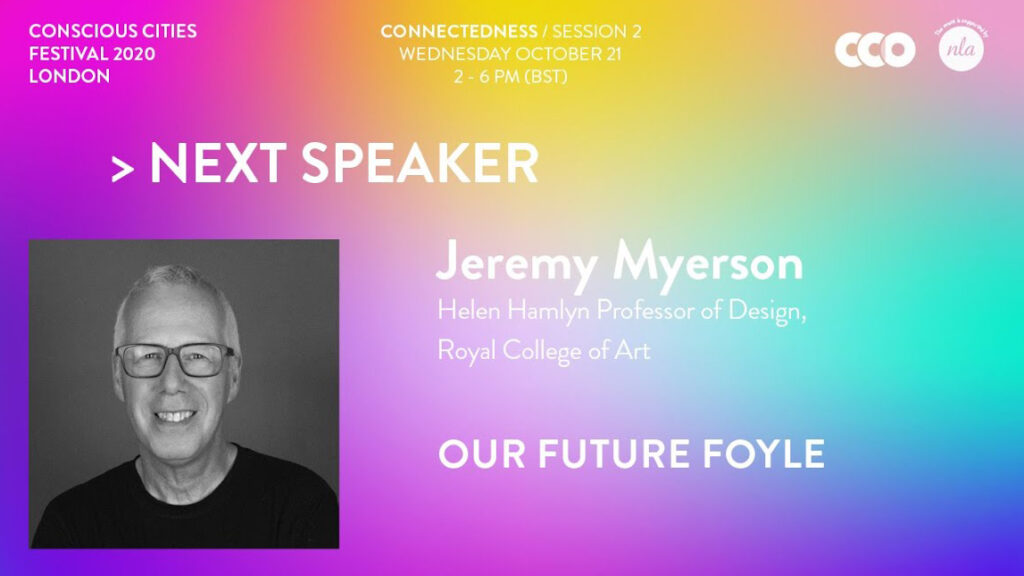The world is fast urbanizing, with 54% of the world’s population living in cities1. Across the world, the issues of urbanization manifest in various forms and the need for a comprehensive city planning is acutely felt2. The field of city planning is viewed from various perspectives with new models and strategies emerging3 – New Urbanism, Eco Cities, Compact Cities and Smart Cities, to name a few. A recent perspective of city planning is in relation to the mental dimensions of the inhabitants. It works along the intersections of architecture and neuroscience, technological advancement and the up surging need for a people-centric urban planning led to the emergence of the concept of Conscious Cities. Conscious Cities encompass a movement to fulfill the concept of creating urban environments that are aware and responsive to our needs through data analysis, artificial intelligence and the application of cognitive sciences in design4. With over half of the world’s population living in cities, creating Conscious Cities, receptive to the psychological needs of the inhabitants becomes the need of the hour. ‘Consciousness’ can be defined as the city’s awareness of the motives, personalities and moods of its inhabitants5. The research on urban planning strategies for Conscious Cities undoubtedly calls for learning from case studies, but it is often a question as to how to study the ‘consciousness’ of a city and which city to choose for study. Through this article, the authors attempt to answer these questions.
How to study?
Depending solely on inferences of perception-based studies may not give the full scope for assessment of a city’s ‘consciousness’; as individuals with different personality dispositions derive life satisfaction from different aspects of their social and physical environments6. To analyze the relationship between a city – a dynamic entity comprised of so many interrelated elements; and its inhabitants – each with unique motives, personality and moods, we need a more reliable and holistic framework. We propose the following framework for analyzing ‘consciousness’ of a city, a three pronged approach; including:
i. Spatial analysis of city for assessment of awareness of user motives;
ii. Perception-oriented survey of inhabitants for assessment of city’s awareness of the user personalities; and
iii. Primary study of the cognition/sensory load of urban spaces for assessment of city’s awareness of the moods of its inhabitants.
Derived from the literature review of research studies on livability and life satisfaction7, the variables and indicators for the spatial analysis part could be:
| Variables | Measurable indicators |
| Crime and safety | Recorded offences and accidents |
| Housing affordability | Housing costs |
| Educational opportunities | Access, retention and attainment statistics |
| Employment | Employment rate and income distribution |
| Health and social services | Proximity to health and social services |
| Transport | Connectivity, access to sustainable modes and parking |
| Public open space | Access, variety and quality |
| Natural environment quality | Pollution statistics |
Derived from the literature review of perception-based research studies on urban consciousness8,9, the survey questionnaire should include assessment of following:
| Assessment of | Questions related to |
| Sense of belonging, responsibility and awareness of values | Feeling of city pride and attachment |
| Volunteering | |
| NGO membership | |
| Participation in arts and cultural activities | |
| Social connections and interactions | Socializing and neighborliness |
| Perception of safety | Inventory of ‘dangerous’ urban spaces |
| Health satisfaction | Self-reported health |
| Inclusivity | Perception of gender and age inclusivity in housing and public spaces |
Derived from the literature review of research studies on sensory experience of urban design or spaces10,11, the primary study should include assessment of:
- Urban environmental stress and coping mechanisms used by inhabitants (the coping mechanisms include but are not limited to becoming aware, visiting restorative urban spaces and getting technological help12)
- Visual stimulation of urban streets and public spaces to categorize them as low visual complexity, just enough arousal; or sensory overload
- Noise levels of urban streets and public spaces.
This three-tiered framework can be used to analyze ‘consciousness’. Allowing for a comprehensive assessment of city’s awareness of the motives, personalities and moods of its inhabitants.
Which city to study?
“While researching a vaccine for polio, Dr. Jonas Salk told me that he had been experiencing a dead end and at every turn and wanted to distance him from work. He then went to a thirteenth century monastery in Assisi for a retreat, and the spirituality of its architecture was of such great inspiration that he was able to do intuitive thinking far beyond any he had ever done before. He said that under that influence, he designed the research that he thought would result in a vaccine, went home to his laboratory in Pittsburg to validate it, and it was correct. This is a spiritual currency- the richness that our historic cities share….”12
Historic cities, the most tangible incarnation of culture, have a specific sense of place that allows people to be emotionally rooted to their environments and derive spiritual engagement from it13. Across the world, most historic urban settlements show a planning order that distinctly marks a religious center as the genius loci of urban pattern14. For example, in India, temples are strewn all over the nation15 and we shall find a temple behind the development of a good many Indian cities of today16.
As early as 1915, there were considerations of the effect of historic city on the wellbeing of its inhabitants, as evident from Geddes’ “Evolution in Cities”; and these cities were perceived as positive environments with a balanced integration of human and manmade artifacts17. In this context, it is worthwhile to investigate the ‘consciousness’ of these historic cities. The wide range of international cases of historic cities with varied geographical, socio-economic, cultural and religious contexts make it challenging to systematically organize and select a representative sample for analysis; however a within-case analysis could easily be done. A detailed study and analysis could result in interesting findings possibly including urban planning strategies to be learnt from our past.
Scope for research
Though a widely debated and discussed concept, there is still ambiguity regarding specific design interventions and planning strategies that could be used in constructing a Conscious City. The need for initiating an empirical research investigating the ‘consciousness’ of cities and case specific strategies for enhancement of the same is escalating. Though limited by the inability to generalize case specific findings, such research studies will surely elicit good urban planning practices which when adapted/combined with modern technology can help design our future conscious cities.
References
- UN. World Urbanization Prospects. New York: UN. (2014).
- Toutain, O., & Gopiprasad, S. India Infrastructure Report . Kanpur: IIT. (2006).
- Duhl, L. J., & Sanchez, A. K. Healthy cities and the city planning process. Copenhagen: World Health Organization. (1999).
- Palti, I. An introduction to Conscious Cities in Conscious Cities: Architecture and Neuroscience 2016 . Conscious Cities Anthology 1. London: online. (2016).
- Palti, I., & Bar, M. (2015). A manifesto for conscious cities: should streets be sensitive to our mental needs? Cities , 1-5.
- Jokela, M., Bleidorn, W., Lamb, M., Gosling, S., & Rentfrow, P. Geographically varying associations between personality and life satisfaction in the London metropolitan area. Proceedings of the National Academy of Sciences(PNAS) of USA, 725-730 (2015).
- Lowe, M., Whitzman, C., Badland, H., Davern, M., Hes, D., Aye, L., Butterworth, I. and Giles-Corti, B. Liveable,Healthy, Sustainable: What are the key indicators for Melbourne Neighborhoods? Place, Health and Liveability Research Program: Research paper 1, 1-57 (2013).
- Isıgıcok, E., Sagocak, M., Arslan, T., & Keskin, E. B. The study on urban consciousness in Bursa. Turkey: Bursa Metropolitan Municipality Publ. (2015).
- Sagocaka, M., Arslanb, T. V., & Keskinc, E. B. Urban Consciousness among Inhabitants of a City in Turkey: Bursa as a case. ASEAN-Turkey ASLI (Annual Serial Landmark International) Conference on Quality of Life 2014 Proceedings. Istanbul: Elsevier, 514 – 521 (2014).
- Degen, M. M., & Rose, G. The sensory experiencing of urban design: the role of walking and perceptual memory. Urban Studies Journal, 3271–3287 (2012).
- Rishi, P., & Khuntia, G. Urban Environmental Stress and Behavioral Adaptation in Bhopal City of India. Urban Studies Research, 1-9 (2012)
- Ellard, C. Coping With Urban Stress: Watch Where You Step. Psychology Today, online (2013).
- Koonce, N. Stewardship: An Architect’s Perspective. In I. Serageldin, E. Shluger, & J. Martin-Brown, Historic cities and sacred sites: cultural roots for urban futures. Washington DC: World Bank, 30-32 (2000).
- Bianca, S. Historic cities in the 21st century: core values for a globalizing world. In F. Bandarin, Managing historic cities. Paris: World Heritage Centre UNESCO, 27-34 (2010).
- Jain, S. Revisiting planning for Indian cities. In Y. Narayanan, Reconceptualising sustainable cities for South Asia. Delhi: Routledge. (2016).
- Subbhareddy. Temples of South India . New Delhi: Gyan Publishing House. (2009).
- Dutt, B. Town planning in ancient India . Delhi: Vishal printers. (1925).
- Siravo, F. Conservation Planning: the road less traveled. In T. Whalen, Conservation Perspectives. Amsterdam: Getty Conservation Institute, 4-9 (2011).










